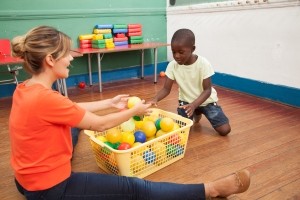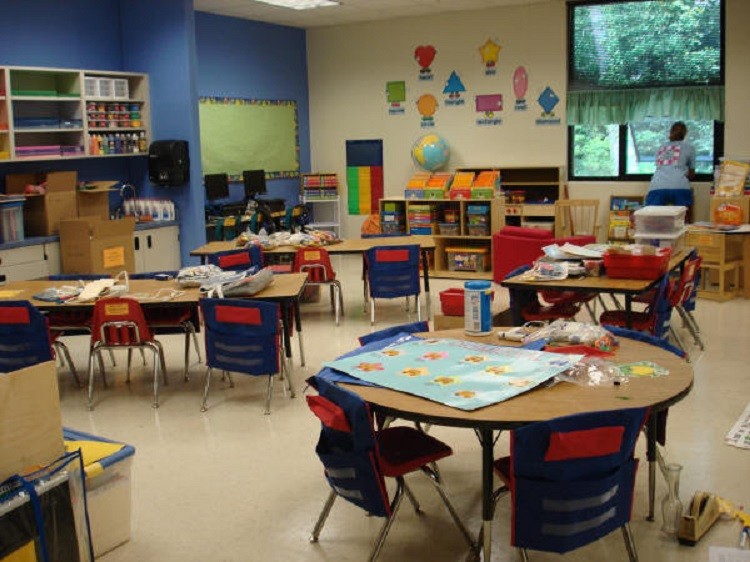Sports for Kids with Autism: Top Activities and Support Strategies is a topic gaining increasing attention among parents, educators, and therapists alike. Physical activity isn’t just beneficial for fitness—it can also promote emotional growth, better behavior, and social development for children on the autism spectrum. However, many families find themselves navigating a complex world of sensory sensitivities, coordination challenges, and a lack of inclusive programs.
Finding the right sport and support system can make a meaningful difference. Whether your child prefers independent activities or thrives in small group environments, certain sports offer structure, predictability, and growth opportunities. This guide explores the best sports for autistic children, how to overcome common challenges, and how resources like LeafWing Center can provide expert support for your family’s journey.
What’s Inside:
Autism affects every child differently, and, while cases of Autism may be similar, no two cases are ever the same. Some children with Autism may be mildly or moderately impacted while others may be profoundly impacted. Applied Behavior Analysis (ABA) therapy is a type of therapy that can improve social, communication, and learning skills through positive reinforcement of those children diagnosed with Autism. Most experts consider ABA to be the gold-standard treatment for children with autism spectrum disorder. The professional ABA therapists at LeafWing Center will provide you and your child with the support and therapy required to ensure your child is receiving the highest quality Autism care.

Understanding the Benefits of Sports for Kids with Autism
For children on the autism spectrum, participating in sports offers more than just a chance to be active—it can be a transformative experience. Structured physical activities provide opportunities to develop important life skills in an environment that encourages routine, focus, and progress. While children with autism often experience unique challenges related to communication, sensory processing, and motor coordination, the right sport can serve as a safe and rewarding outlet for energy, self-expression, and social interaction. When adapted thoughtfully, sports become a powerful tool to support both personal growth and community inclusion.
Regular exercise and structured activities can support a wide range of developmental and health benefits for kids with autism, including:
- Improved motor skills, through repetitive drills and movement patterns that enhance both fine and gross motor abilities./li>
- Better balance and coordination, especially from activities like gymnastics or martial arts that build proprioception and spatial awareness.
- Increased muscular strength and endurance, particularly from sports like swimming and track events promote sustained physical engagement.
- Enhanced skill-related fitness, including agility, reaction time, and flexibility.
- Better sleep and reduced anxiety, as physical activity often leads to more restful nights and a calmer mood during the day.
- Improved behavior and social function, with team drills and partner-based exercises encouraging turn-taking, eye contact, and communication.
- Boosted mental well-being, as the endorphin released from exercise helps reduce stress, build perseverance, and increase confidence.
Yet, most kids with autism face hurdles to participating in sports, including:
- Lower levels of physical activity
- Reduced physical fitness benchmarks
- Inadequate social skills for team dynamics
- Heightened fear of injury
- A lack of specialized, appropriate programs
Understanding both the benefits and barriers allows caregivers to make informed decisions and advocate for supportive environments. By identifying activities that align with a child’s strengths and sensitivities, and by ensuring those activities are inclusive and well-supported, families and professionals can create opportunities for kids with autism to thrive—not only as athletes but as confident, connected individuals.

Top Individual and Team Sports for Kids with Autism
What sport is best for an autistic child? There’s no one-size-fits-all answer, but there are certain types of sports that consistently support success for kids on the spectrum. Kids with autism often benefit from activities that offer clear structure, predictable routines, and minimal sensory overload. Sports that emphasize individual performance—while still allowing for team belonging—can help reduce social anxiety and increase a sense of accomplishment. These activities create a space where kids can focus on building physical skills at their own pace, without the added pressure of fast-paced team dynamics or overwhelming sensory input. With thoughtful guidance, the right sport can be both a calming outlet and a powerful learning opportunity.
Below is a list of recommended activities:
- Swimming
- Predictable environment (water temperature, lane lines)
- One-to-one instructor attention if possible
- Track and Field
- Individual events (sprints, long jump) minimize social pressure
- Simple, repetitive motion
- Bowling
- Predictable rhythm and rules
- Tactile feedback from handling the ball
- Martial Arts (e.g., Taekwondo, Karate)
- Emphasis on discipline, routine, and non-contact practice
- Improves focus and self-regulation
- Gymnastics
- Structured skill progression
- Sensory input through tumbling, balance beams, and bars
- Dance
- Music and movement foster expression
- Rehearsals develop memorization and sequencing skills
- Horseback Riding (Therapeutic Riding)
- Rhythmic motion of the horse improves balance
- Builds trust between child and animal
- Soccer
- Small-sided games reduce sensory overload
- Teamwork in a structured setting with clear rules
Many kids with autism flourish when given individual participation options or small group formats, especially when sensory considerations are prioritized. Tailor the environment—quiet lanes at the pool, one-on-one coaching, or adaptive equipment—to your child’s unique sensory profile and comfort level. It’s also important to remember that success in sports doesn’t always mean competition; for many autistic kids, progress means improved coordination, increased confidence, or simply enjoying a physical outlet. The most impactful sports experiences are those that emphasize enjoyment, personal growth, and a sense of belonging.

Overcoming Common Challenges in Sports Participation
Even with the right sport, children on the spectrum can struggle with:
- Coordination difficulties: Break skills into smaller steps; use visual aids and video modeling.
- Sensitivity to environment: Reduce auditory distraction with noise-cancelling headphones or soft background music.
- Social skill barriers: Pair children with trained peer buddies or coaches experienced in ASD.
- Fear of injury: Emphasize protective gear and teach safety routines slowly and repetitively.
Action Plan for Coaches and Parents
- Create a visual schedule of practice routines.
- Use positive reinforcement: reward progress rather than perfection.
- Build in sensory breaks: a quiet corner or fidget tools when overstimulation occurs.
- Offer choice within the structure: selecting which drill or preferred piece of equipment.
By acknowledging these hurdles with targeted strategies, children gain both competence in sport-specific skills and broader life skills that transfer to school and home.

Strategies for Handling Sports Activities That Go Wrong
Even the best-laid plans can encounter hiccups—a sprained ankle, a bout of sensory overload, or a meltdown after a missed goal. When a sports activity goes off-track:
- Stay Calm and Have a Plan
- Keep a first-aid kit and sensory toolkit on hand.
- Practice emergency exit strategies and safe spaces.
- Communicate Clearly and Compassionately
- Use concise language and visual supports (“First aid, then water break.”).
- Validate feelings: “I see you’re upset; let’s take a break.”
- Debrief and Adjust
- After recovery, review what happened.
- Adjust future sessions to prevent recurrence (e.g., shorter drills, altered environment).
- Reinforce Success
- Highlight what went well before the incident.
- Encourage a return to activity when the child is ready.
By preparing for mishaps and responding with empathy, parents and coaches can teach resilience and problem-solving—skills just as valuable as any athletic achievement. When things don’t go as planned, these moments become powerful teaching opportunities. Whether it’s helping a child process frustration after a missed goal or calmly guiding them through a sensory overload situation, the focus should remain on emotional growth, not perfection. Over time, children learn that setbacks are part of the process and that their value isn’t defined by performance, but by their effort and perseverance. With the right support, even the tough moments on the field or in the studio can lay the foundation for lasting confidence, adaptability, and self-awareness.
How LeafWing Center Supports Sports Engagement for Kids with Autism
At LeafWing Center, we understand that successful sports participation for children with autism requires more than just a coach—it demands a supportive ecosystem. Our specialized services include:
- Individualized Assessment – We evaluate each child’s sensory profile, motor abilities, and social readiness to recommend the right sport and modifications.
- Adaptive Coaching Programs – Our certified instructors use evidence-based teaching methods—visual supports, social narratives, and positive behavior strategies—to ensure every child thrives.
- Family and Caregiver Workshops – Parents learn practical techniques for practice at home, from setting up sensory-friendly spaces to communicating with school PE staff.
- Peer Support Groups – Small group sessions foster friendships, teamwork, and social confidence in a safe, understanding environment.
- Ongoing Progress Monitoring – Regular check-ins and data-driven feedback loops help us adapt goals and celebrate milestones.
By partnering with LeafWing Center, families gain access to a holistic approach—where sports become more than exercise; they become a pathway to empowerment, confidence, and lifelong well-being.
Engaging in sports offers kids with autism a wealth of physical, emotional, and social benefits. From individual activities like swimming and gymnastics to adaptive team options such as small-sided soccer or bowling, there’s a sport to suit every child’s preferences and needs. While coordination challenges, sensory sensitivities, and social barriers may arise, strategic planning—backed by resources like the LeafWing Center—can transform obstacles into triumphs. With patience, preparation, and the right support network, your child can discover the joy of movement, the pride of teamwork, and the confidence to tackle any challenge—on and off the playing field.
Key Takeaways
- Sports Offer Broad Developmental Benefits for Kids with Autism
Engaging in physical activity supports not only fitness but also social skills, emotional regulation, sleep quality, and mental well-being. Structured sports provide predictable routines that can help children with autism thrive in both physical and interpersonal domains.
- Certain Sports Are Especially Well-Suited for Autistic Children
Sports like swimming, martial arts, track and field, bowling, and horseback riding provide structure, individual pacing, and sensory-friendly environments. These activities allow children to build skills with less pressure from social or sensory overload.
- Common Barriers Can Be Overcome with Thoughtful Strategies
Challenges such as motor coordination issues, sensory sensitivities, and social skill gaps can be addressed through adaptive approaches—like visual schedules, one-on-one coaching, and incorporating sensory breaks during sessions.
- Handling Setbacks Builds Resilience
When sports activities don’t go as planned (e.g., meltdowns, injuries, overstimulation), staying calm, communicating clearly, and using supportive strategies like debriefing can turn challenges into learning moments that strengthen a child’s adaptability and confidence.
- Professional Support Makes a Difference
Organizations like LeafWing Center offer individualized assessments, adaptive coaching, caregiver workshops, and peer support programs. This holistic model helps ensure sports become a tool for long-term growth, not just physical activity.
Related Glossary Terms
Other Related Articles
Related Podcast
Frequently asked questions about ABA therapy
What is ABA Therapy used for?
ABA-based therapy can be used in a multitude of areas. Currently, these interventions are used primarily with individuals living with ASD; however, their applications can be used with individuals living with pervasive developmental disorders as well as other disorders. For ASD, it can be used in effectively teaching specific skills that may not be in a child’s repertoire of skills to help him/her function better in their environment whether that be at home, school, or out in the community. In conjunction with skill acquisition programs, ABA-based interventions can also be used in addressing behavioral excesses (e.g., tantrum behaviors, aggressive behaviors, self-injurious behaviors). Lastly, it can also be utilized in parent/caregiver training.
In skill acquisition programs, a child’s repertoire of skills is assessed in the beginning phase of the services in key adaptive areas such as communication/language, self-help, social skills, and motor skills as well. Once skills to be taught are identified, a goal for each skill is developed and then addressed/taught by using ABA-based techniques to teach those important skills. Ultimately, an ABA-based therapy will facilitate a degree of maintenance (i.e., the child can still perform the learned behaviors in the absence of training/intervention over time) and generalization (i.e., the learned behaviors are observed to occur in situations different from the instructional setting). These two concepts are very important in any ABA-based intervention.
In behavior management, the challenging behaviors are assessed for their function in the beginning phase of the services. In this phase, the “why does this behavior happen in the first place?” is determined. Once known, an ABA-based therapy will be developed to not just decrease the occurrence of the behavior being addressed, but also teach the child a functionally-equivalent behavior that is socially-appropriate. For example, if a child resorts to tantrum behaviors when she is told she cannot have a specific item, she may be taught to accept an alternative or find an alternative for herself. Of course, we can only do this up to a certain point—the offering of alternatives. There comes a point when a ‘no’ means ‘no’ so the tantrum behavior will be left to run its course (i.e., to continue until it ceases). This is never easy and will take some time for parents/caregivers to get used to, but research has shown that over time and consistent application of an ABA-based behavior management program, the challenging behavior will get better.
In parent training, individuals that provide care for a child may receive customized “curriculum” that best fit their situation. A typical area covered in parent training is teaching responsible adults pertinent ABA-based concepts to help adults understand the rationale behind interventions that are being used in their child’s ABA-based services. Another area covered in parent training is teaching adults specific skill acquisition programs and/or behavior management programs that they will implement during family time. Other areas covered in parent training may be data collection, how to facilitate maintenance, how to facilitate generalization of learned skills to name a few.
There is no “one format” that will fit all children and their families’ needs. The ABA professionals you’re currently working with, with your participation, will develop an ABA-based treatment package that will best fit your child’s and your family’s needs. For more information regarding this topic, we encourage you to speak with your BCBA or reach out to us at info@leafwingcenter.org.
Who Can Benefit From ABA Therapy?
There is a common misconception that the principles of ABA are specific to Autism. This is not the case. The principles and methods of ABA are scientifically backed and can be applied to any individual. With that said, the U.S. Surgeon General and the American Psychological Association consider ABA to be an evidence based practice. Forty years of extensive literature have documented ABA therapy as an effective and successful practice to reduce problem behavior and increase skills for individuals with intellectual disabilities and Autism Spectrum Disorders (ASD). Children, teenagers, and adults with ASD can benefit from ABA therapy. Especially when started early, ABA therapy can benefit individuals by targeting challenging behaviors, attention skills, play skills, communication, motor, social, and other skills. Individuals with other developmental challenges such as ADHD or intellectual disability can benefit from ABA therapy as well. While early intervention has been demonstrated to lead to more significant treatment outcomes, there is no specific age at which ABA therapy ceases to be helpful.
Additionally, parents and caregivers of individuals living with ASD can also benefit from the principles of ABA. Depending on the needs of your loved one, the use of specified ABA techniques in addition to 1:1 services, may help produce more desirable treatment outcomes. The term “caregiver training” is common in ABA services and refers to the individualized instruction that a BCBA or ABA Supervisor provides to parents and caregivers. This typically involves a combination of individualized ABA techniques and methods parents and caregivers can use outside of 1:1 sessions to facilitate ongoing progress in specified areas.
ABA therapy can help people living with ASD, intellectual disability, and other developmental challenges achieve their goals and live higher quality lives.
What does ABA Therapy look like?
Agencies that provide ABA-based services in the home-setting are more likely to implement ABA services similarly than doing the same exact protocols or procedures. Regardless, an ABA agency under the guidance of a Board-Certified Behavior Analyst follows the same research-based theories to guide treatment that all other acceptable ABA agencies use.
ABA-based services start with a functional behavior assessment (FBA). In a nutshell, a FBA assesses why the behaviors may be happening in the first place. From there, the FBA will also determine the best way to address the difficulties using tactics that have been proven effective over time with a focus on behavioral replacement versus simple elimination of a problem behavior. The FBA will also have recommendations for other relevant skills/behaviors to be taught and parent skills that can be taught in a parent training format to name a few. From there, the intensity of the ABA-based services is determined, again, based on the clinical needs of your child. The completed FBA is then submitted to the funding source for approval.
One-on-one sessions between a behavior technician and your child will start once services are approved. The duration per session and the frequency of these sessions per week/month will all depend on how many hours your child’s ABA services have been approved for—usually, this will be the number recommended in the FBA. The sessions are used to teach identified skills/behaviors via effective teaching procedures. Another aspect of ABA-based services in the home-setting is parent training. Parent training can take many forms depending on what goals have been established during the FBA process. The number of hours dedicated for parent training is also variable and solely depends on the clinical need for it. If a 1:1 session is between a behavior technician and your child, a parent training session or appointment is between you and the case supervisor and with and without your child present, depending on the parent goal(s) identified. Parent training service’s goal is for you to be able to have ample skills/knowledge in order for you to become more effective in addressing behavioral difficulties as they occur outside of scheduled ABA sessions. Depending on the goals established, you may be required to participate in your child’s 1:1 sessions. These participations are a good way for you to practice what you have learned from the case supervisor while at the same time, having the behavior technician available to you to give you feedback as you practice on those new skills.
As mentioned in the beginning, no two ABA agencies will do the same exact thing when it comes to providing ABA services; however, good agencies will always base their practice on the same empirically-proven procedures.
How do I start ABA Therapy?
In most cases, the first item required to start ABA therapy is the individual’s autism spectrum disorder (ASD) diagnosis report. This is typically conducted by a doctor such as a psychiatrist, psychologist, or a developmental pediatrician. Most ABA therapy agencies and insurance companies will ask for a copy of this diagnosis report during the intake process as it is required to request an ABA assessment authorization from the individual’s medical insurance provider.
The second item required to start ABA therapy is a funding source. In the United States, and in cases where Medi-Cal or Medicare insurances are involved, there is a legal requirement for ABA services to be covered when there is a medical necessity (ASD diagnosis). Medi-Cal and Medicare cover all medically necessary behavioral health treatment services for beneficiaries. This typically includes children diagnosed with ASD. Since Applied Behavior Analysis is an evidence based and effective treatment for individuals with ASD, it is considered a covered treatment when medically necessary. In many cases, private insurance will also cover ABA services when medically necessary, however in these cases, it is best to speak directly with your medical insurance provider to determine the specifics of the coverage and to ensure that ABA is in fact, a covered benefit. Additionally, some families opt to pay for ABA services out-of-pocket.
The next step to starting ABA therapy is to contact an ABA provider whom you are interested in working with. Depending on your geographic location, ABA agencies exist in many cities across the United States. Your insurance carrier, local support groups, and even a thorough online search can help you find reputable and properly credentialed ABA agencies near you. Our organization, LeafWing Center, is based in southern California and is recognized for aiding people with ASD achieve their goals with the research based on applied behavior analysis.
Once you have identified the ABA provider with whom you wish to work, they should help you facilitate the next steps. These will include facilitating paperwork and authorizations with your funding source. Once the assessment process begins, a BCBA (Board Certified Behavior Analyst) or qualified Program Supervisor should get in contact with you to arrange times in which interviews with parents/caregivers and observations of your loved one can be conducted. This will help in the process of gathering important clinical information so that with your collaboration, the most effective treatment plans and goals can be established for your loved one. This process is referred to as the Functional Behavior Assessment (FBA) and is elaborated on in different blog posts on our website. With regard as to what can be expected once ABA therapy begins, please read our blog post titled: When You Start an ABA program, What Should You Reasonably Expect from Your Service Provider?











